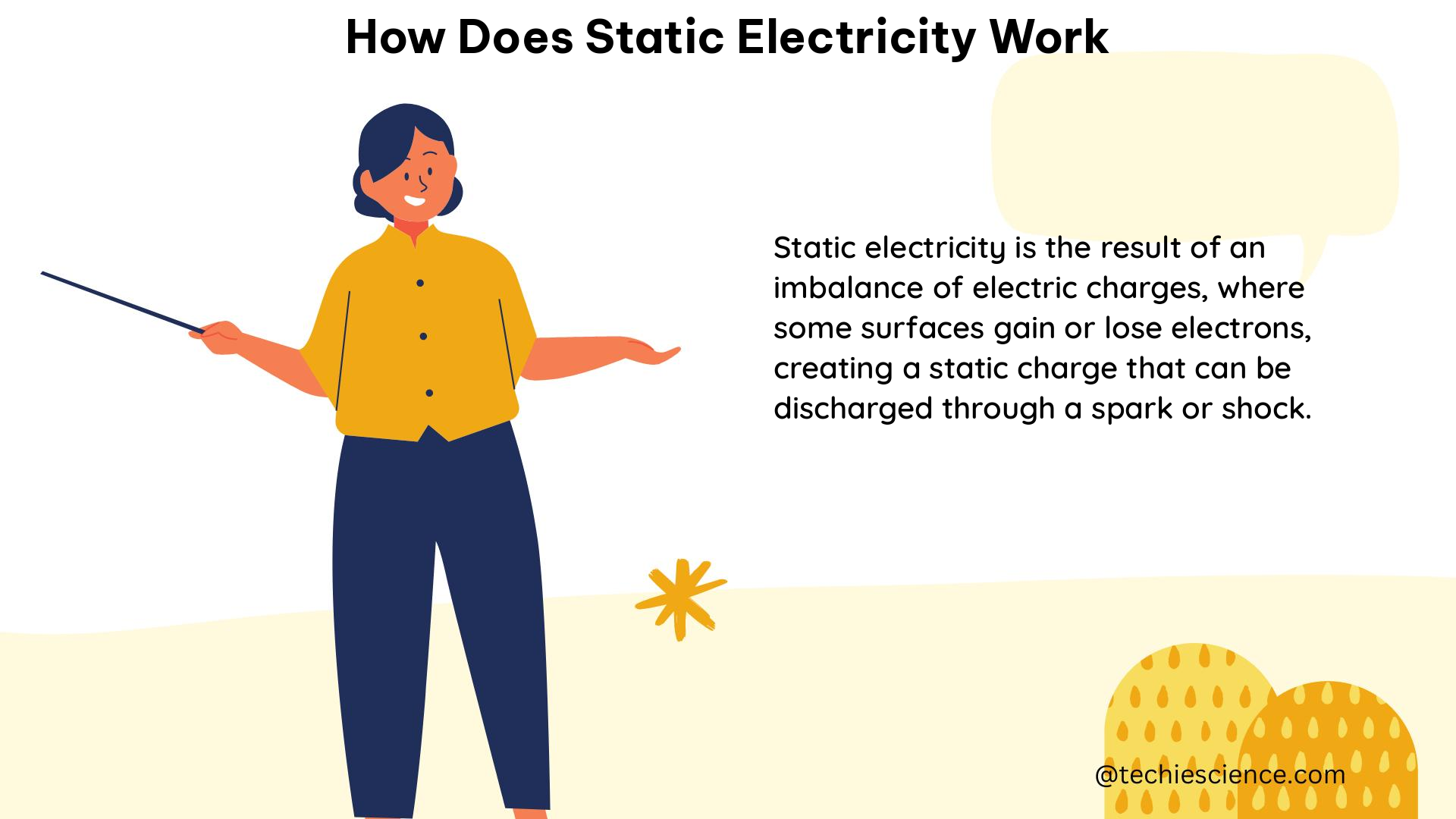Static electricity is a fascinating phenomenon that occurs due to an imbalance of positive and negative charges within an object. This imbalance can be measured and quantified in various ways, providing valuable insights into the underlying principles of static electricity. In this comprehensive guide, we will delve into the measurement techniques, quantifiable examples, and theoretical explanations that shed light on the intricate workings of static electricity.
Measurement of Static Electricity
Electric Field Strength
The electric field strength is a crucial parameter in understanding static electricity. It represents the force exerted by the electric field on a charged particle, and is typically measured in volts per meter (V/m). The electric field strength can be calculated using Coulomb’s Law, which states that the electric field strength (E) is proportional to the charge (Q) and inversely proportional to the square of the distance (r) from the charge:
E = k * Q / r^2
where k is Coulomb’s constant, approximately 8.99 × 10^9 N m^2 C^2.
Surface Voltage
Surface voltage is another important measure of static electricity. It represents the electric potential difference between the surface of an object and a reference point, usually ground. Surface voltage is typically measured using specialized meters, such as the Fraser 715 Static Meter, which utilizes a capacitor to measure the voltage across the capacitor, which varies directly with the charge.
Charge Measurement
The charge (Q) can be measured in units of coulombs (C). The relationship between the charge and the electric field strength is given by Coulomb’s Law, which allows for the calculation of the charge based on the electric field strength and distance.
Quantifiable Examples

Rubbing a Comb Against Hair
When a comb is rubbed against hair, it becomes negatively charged due to the transfer of electrons from the hair to the comb. The electric field strength generated by the comb can be measured, and the surface voltage can be calculated based on the charge and distance from the comb.
Static Electricity in Photocopiers
In photocopiers, a charged silicon plate (drum) is used to attract toner particles, which then transfer the image to paper. The electric field strength and surface voltage on the drum can be measured to understand the electrostatic forces involved in the process.
Static Electricity in Spray Painting
In spray painting, the paint droplets are charged oppositely to the car frame, ensuring they are attracted to the frame and reducing loss at the edges. The electric field strength and surface voltage can be measured to optimize the painting process.
Theoretical Explanation
Coulomb’s Law
Coulomb’s Law states that the electric force (F) between two charged particles is proportional to the product of their charges (Q1 and Q2) and inversely proportional to the square of the distance (r) between them:
F = k * Q1 * Q2 / r^2
This fundamental law provides the theoretical foundation for understanding the interactions between charged particles and the resulting electric fields.
Gauss’s Theorem
Gauss’s Theorem relates the distribution of electric charge to the resulting electric field. It states that the total electric flux through a closed surface is proportional to the charge enclosed within that surface. This theorem helps to understand the relationship between the charge distribution and the resulting electric field.
Conclusion
Static electricity is a complex and fascinating phenomenon that can be measured and quantified in various ways. By understanding the electric field strength, surface voltage, and charge measurement, we can gain valuable insights into the underlying principles of static electricity. The examples provided, along with the theoretical explanations, offer a comprehensive understanding of how static electricity works. This knowledge can be applied in various fields, from photocopiers to spray painting, to optimize and control the effects of static electricity.
References
- Library of Congress. (2019, November 19). How does static electricity work? Retrieved from https://www.loc.gov/everyday-mysteries/physics/item/how-does-static-electricity-work/
- Primary Connections. (n.d.). Static electricity. Retrieved from https://www.primaryconnections.org.au/themes/custom/connections/assets/SBR/data/Phy/sub/electrostatics/electrostatics.htm
- Fraser Anti-Static Techniques. (2020, November 27). Measurement of static electricity. Retrieved from https://fraser-antistatic.com/knowledge-centre/insights/measurement-of-static-electricity/
- VEX Forum. (2021, December 17). Static electricity: quantitative measurement & prevention. Retrieved from https://www.vexforum.com/t/static-electricity-quantitative-measurement-prevention/96410
- Ferrovial. (n.d.). Static electricity: what is, history, how is generated. Retrieved from https://www.ferrovial.com/en/stem/static-electricity/
Hello, I am Deeksha Dinesh, currently pursuing post-graduation in Physics with a specialization in the field of Astrophysics. I like to deliver concepts in a simpler way for the readers.